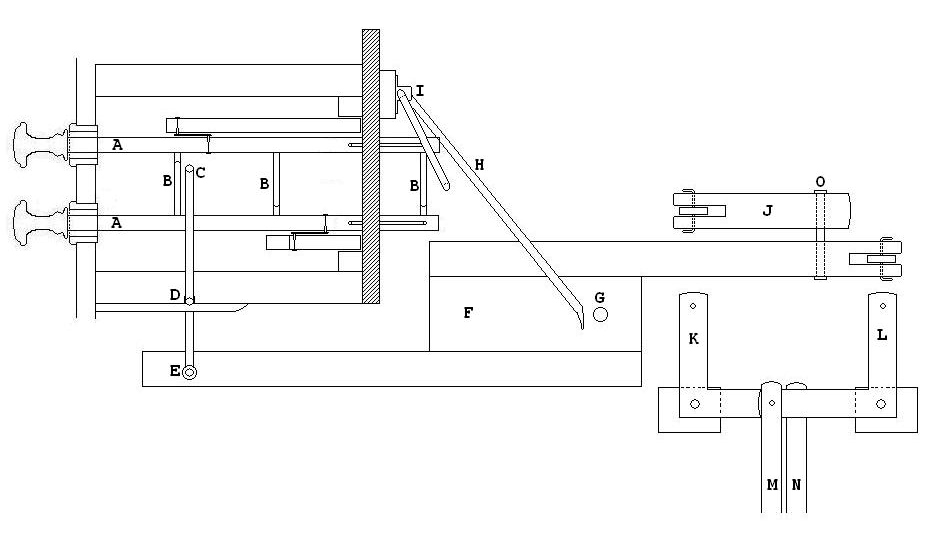| Composition Pedal | Great | Swell | Pedal |
| (Gt) Pedal 1 | Dulciana 8' | - | Sub bass 16' |
| (Gt) Pedal 2 | Open Diapason 8' Clarabella 8' Dulciana 8' Principal 4' |
- | Open Diapason 16' sub bass 16' |
| (Sw) Pedal 1 | - | Gamba 8' | - |
| (Sw) Pedal 2 | - | Bourdon 16' Gamba 8' Flute 4' Oboe 8' |
- |
